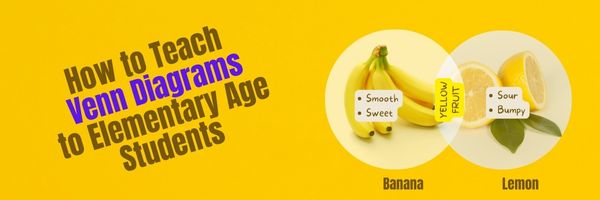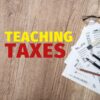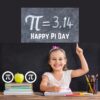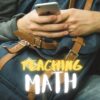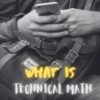Category: Math
How to Teach Venn Diagrams to Elementary School Students
Venn Diagrams are one of the most visual approaches to showing students the logical relationships between sets and connectivity of data. It uses overlapping circles to show the wholeness of data and then where they overlap other data sets. It’s easy to find templates for them–in MS Office, Google Apps, Canva, and more.
One of our Ask a Tech Teacher crew has organized the basics on how to teach Venn Diagrams to elementary-age students:
- What is a Venn Diagram
- How to make it digitally
- How to make it clear to elementary students (get crafty)
- How to use it to design games
How to Teach Venn Diagrams to Elementary School Students
Teaching children Venn diagrams is the beginning of teaching them how to sort and manage data, a skill that is becoming ever more useful in this technological era. However, finding a way to teach them that sticks is important – generic worksheets just won’t do! We’ve come up with a few ways you can teach elementary school students Venn diagrams that will make your lessons dynamic and fun.
https://pixabay.com/photos/school-draw-drawing-education-1974369/
What is a Venn Diagram?
It’s important to make sure you first understand what a Venn diagram is. A Venn diagram is a plot of overlapping circles that can display items via specific categories, as well as relationships. For example, you can have a Venn diagram representing blue eyes with one circle, and brown hair with another circle. Those with blue eyes but not brown hair will end up in only the segment for blue eyes; those with brown hair but not blue eyes will be placed only in the segment for brown hair. Those with blue eyes and brown hair will be placed in the segment created by the overlap of the two circles.
This is a fun concept to teach to children because it’s a visual method, so it isn’t difficult to find something both visual and interactive to make sure it’s memorable. Now for the methods!
Make it Digital
With technology becoming the main focus of life, especially for the younger generation, one of the best ways to connect and share ideas is through technology. This means using digital tools and accessing an online venn diagram can be incredibly helpful for many reasons. Firstly, it allows you to project what you’re describing on your smartboard or interactive whiteboard, allowing you to demonstrate to the class what you mean. It makes a good start!
Share this:
Teaching Early Geometry Concepts
I spend a lot of time every week reading about current thinking in education. An article over at The Tech Edvocate caught my eye on early math. Math is a fundamental process in learning, not just adding and subtracting but to develops skill in problem solving and critical thinking. Scientists think that the sophistication of stone toolmaking almost a million years ago showed the symbolic and spatial thinking ability already present in our ancestors–a million years ago! To tap into that native ability with our youngest learners is not only important, but will make their education journey more enjoyable.
Here’s The Tech Edvocate’s article:
Teaching Early Geometry Concepts
Develop her visual memory of shapes by drawing a triangle, display it to her for about two seconds to three seconds, then ask her to describe it …
Check out these articles on Ask a Tech Teacher about teaching math:
Share this:
Resources to Teach Taxes
As a passionate Economics major in college (which grew into an MBA), I find Econ at the root of much of the world around us. It starts with counting coins in first and second grade and grows up to a peek into NASDAQ and other adult subjects in middle school.
In the US, tax day is April 15th. Here are some good websites to discuss what is probably a popular topic in families:
Taxes
- BrainPOP | Taxes
- A history of US taxes
- Taxes–from Crash Course Economics
- Where does your money go? — lesson plan from PBS
- TurboTax Tax Calculator
After April 15th, there are great ways to teach about economics, financial literacy, and prepare students for managing their lives fiscally once they’re launched into the world:
Share this:
Celebrate Pi Day and Maths Day
Two math celebrations are coming up on March 14th: Pi Day and World Maths Day
Pi Day
Pi Day is an annual celebration commemorating the mathematical constant π (pi). Pi Day is observed on March 14 since 3, 1, and 4 are the three most significant digits of π in the decimal form.
Daniel Tammet, a high-functioning autistic savant, holds the European record for reciting pi from memory to 22,514 digits in five hours and nine minutes.
Share this:
Teaching Math
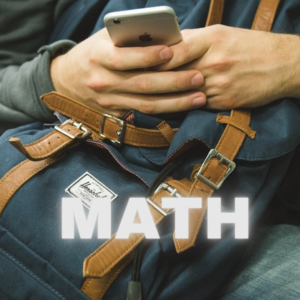 Every lower-grade teacher I know has huge numbers of students who love math but the older they get, the more those numbers shrink until by Middle School, they’re anemic, at best. The solution according to some students, is to instill the cerebral skills that support math prior to kindergarten. Here’s a great article from ASCD and EdSource on that subject:
Every lower-grade teacher I know has huge numbers of students who love math but the older they get, the more those numbers shrink until by Middle School, they’re anemic, at best. The solution according to some students, is to instill the cerebral skills that support math prior to kindergarten. Here’s a great article from ASCD and EdSource on that subject:
Math in early childhood is key, studies show
Studies show that mathematical reasoning ability is crucial in early education, and when children understand math before entering elementary school, they have higher achievement on both reading and math tests later in their school years. Carolyn Pfister, an education administrator for the California State Board of Education, said many adults have math anxiety that has been passed to children.
For more on math, read these articles:
Need math resources? Have students try these
15+ Websites to Teach Financial Literacy
Quick Review of 7 Popular Math Programs
Share this:
Math Scores Drop Again
Engaging children in math learning is a problem that continues relentlessly, year after year. We don’t seem to know how to fix the dropping math scores (and reading but that’s for another article). We can’t even blame it on COVID! If you’d like to understand this trend more, check out Education Week‘s article:
Young Adolescents’ Scores Trended to Historic Lows on National Tests. And That’s Before COVID Hit
Math scores for 9- and 13-year-old students on the “Nation’s Report Card” declined sharply from 2012 to 2020, and reading scores remained largely flat, according to the National Assessment of Educational Progress Long-Term Trend study released today…
Ask a Tech Teacher has several articles in December that discuss this issue:
Share this:
The Return to Rigorous Mathematics
One of my favorite PD sites, EdWeb, recently offered a free webinar (with CE Certificate) on Returning to Rigorous Mathematics. Here’s a preview:
As students return to a hopefully more typical school year, learning is likely to be anything but typical. Student and teacher experiences over the past 18 months have varied greatly and classrooms are filled with students representing a wider range of learning needs than ever before. The challenge for teachers is to help each student move their mathematics learning forward. While it will take time for most students to return to typical “on-grade-level” expectations, we must support students to move forward rather than picking up instruction where “regular school” left off in March 2020. Responding to this wide range of learners is part of the job in education; the pandemic has made this part of the work more prominent in many classrooms.
I have several articles over December that discuss this issue (links won’t work until publication date):
What is ‘Technical Math’–December 10, 2021 (this article)
Returning to Rigorous Mathematics–December 16, 2021
Math Scores Drop Again–December 17, 2021
If you’re struggling with math success in your classroom, here are some more resources offered by Ask a Tech Teacher:
Share this:
What is ‘Technical Math’?
The difficulties with engaging children in math learning grows each year. I have several articles coming up next week that discuss that issue (links won’t work until publication date):
What is ‘Technical Math’–December 10, 2021 (this article)
Returning to Rigorous Mathematics–December 16, 2021
Math Scores Drop Again–December 17, 2021
An excellent solution is to change the focus, teach kids what will be required. One of our Ask a Tech Teacher partners has a good article on that topic:
What Is Technical Math?
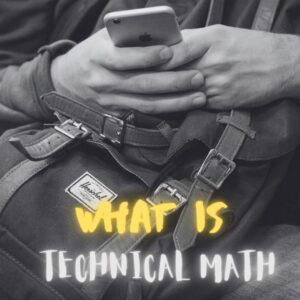 There’s an old joke about how kids are forced to learn algebra and trigonometry in school, but have no use for those subjects in real life. But in reality, that depends heavily on what kind of profession you choose to go into. A lot of professions you might think wouldn’t call for much math actually require it as a core skill set for certain trades, including plumbers, electricians, welders, and construction workers.
There’s an old joke about how kids are forced to learn algebra and trigonometry in school, but have no use for those subjects in real life. But in reality, that depends heavily on what kind of profession you choose to go into. A lot of professions you might think wouldn’t call for much math actually require it as a core skill set for certain trades, including plumbers, electricians, welders, and construction workers.
Why do trades like this require so much mathematics? These are supposed to be the jobs you don’t need extensive education for, right? Well, as it turns out, they’re not.
In fact, many technical trades require more math than some white-collar professions. Let’s look at welding, for example. To excel in their profession, a welder needs to understand and calculate concepts like material usage, which requires using fractions and sometimes algebra. They’ll also need to know how to use charts and graphs for some processes.
The same is true of construction workers, who must deal with equations, conversion of quantities, and taking measurements. In a typical workday, a construction worker may have to use equations to convert between units of measure, or use ratios to figure out the proportion of a roof’s length to its height. Getting some calculations wrong in construction work can have dangerous, if not deadly, consequences. In more advanced construction work (i.e. the jobs that pay well), they’ll even have to know some geometry.
The skills required for these sorts of jobs comes from a particular field, called “trade math” or “technical math.”
Share this:
Need math resources? Have students try these
 Struggling with helping students learn math when you can’t be at their side? Try these videos (check here for updates to links):
Struggling with helping students learn math when you can’t be at their side? Try these videos (check here for updates to links):
- Bright Storm math videos
- Khan Academy–online progressive math program; free
- Math Class with Terry V
- Math DrBob
- Math Videos
- Math videos–clean, nice
- MathTV–videos; create playlists of topics; Spanish option
- Numberphile
- Origo One — one-minute math videos
- Patrick JMT–math videos for lots of grade levels
- WOWMath
- YayMath — videos on math
Share this:
15+ Websites to Teach Financial Literacy
 Financial Literacy Month is recognized annually in Canada in November,[1] and National Financial Literacy Month was recognized in the United States in April 2004,[2] in an effort to highlight the importance of financial literacy and teach citizens how to establish and maintain healthy financial habits.
Financial Literacy Month is recognized annually in Canada in November,[1] and National Financial Literacy Month was recognized in the United States in April 2004,[2] in an effort to highlight the importance of financial literacy and teach citizens how to establish and maintain healthy financial habits.
When kids read that America’s $28 trillion+ debt is accepted by many experts as ‘business as usual’, I wonder how that news will affect their future personal finance decisions. Do they understand the consequences of unbalanced budgets? The quandary of infinite wants vs. finite dollars? Or do they think money grows on some fiscal tree that always blooms? The good news is: Half of the nation’s schools require a financial literacy course. The bad new is: Only half require a financial literacy course.
If your school doesn’t teach a course about personal economics, there are many online sites that address the topic as mini-lessons. Some are narrative; others games. Here are fifteen I like. See if one suits you (check here for updates on links):
- Banzai–financial literacy (free) online program
- Bartleby Economics Q&A
- BizKids–games to teach business and finance
- Budget Challenge–for HS and college
- Cash Crunch–games for youngers and olders (HS and college)
- Financial Football–as fun as it sounds
- Financial Literacy Quizzes–in a variety of financial topics for high schoolers
- Gen I Revolution
- H&R Block Budget Challenge game
- Life on Minimum Wage (a game–through TpT but free)
- Living Wage–what’s it cost to survive–by state, cities, counties
- Own vs Rent Calculator–plug in the numbers; see the results
- Personal Finance for MS
- Personal Finance Lab–stock market game
- Practical Money Skills
- Spent


